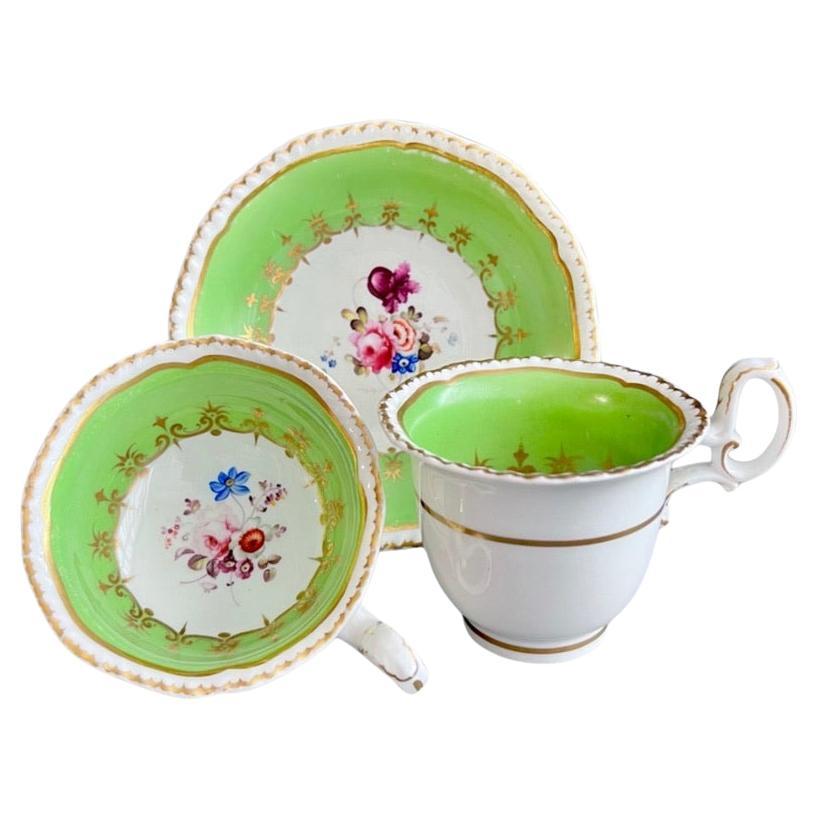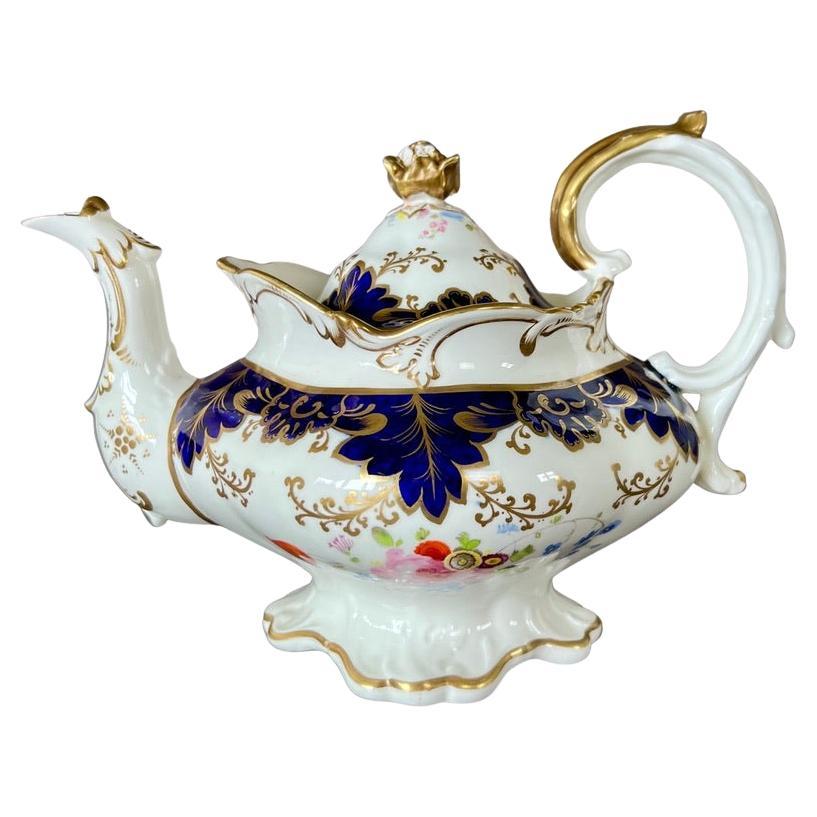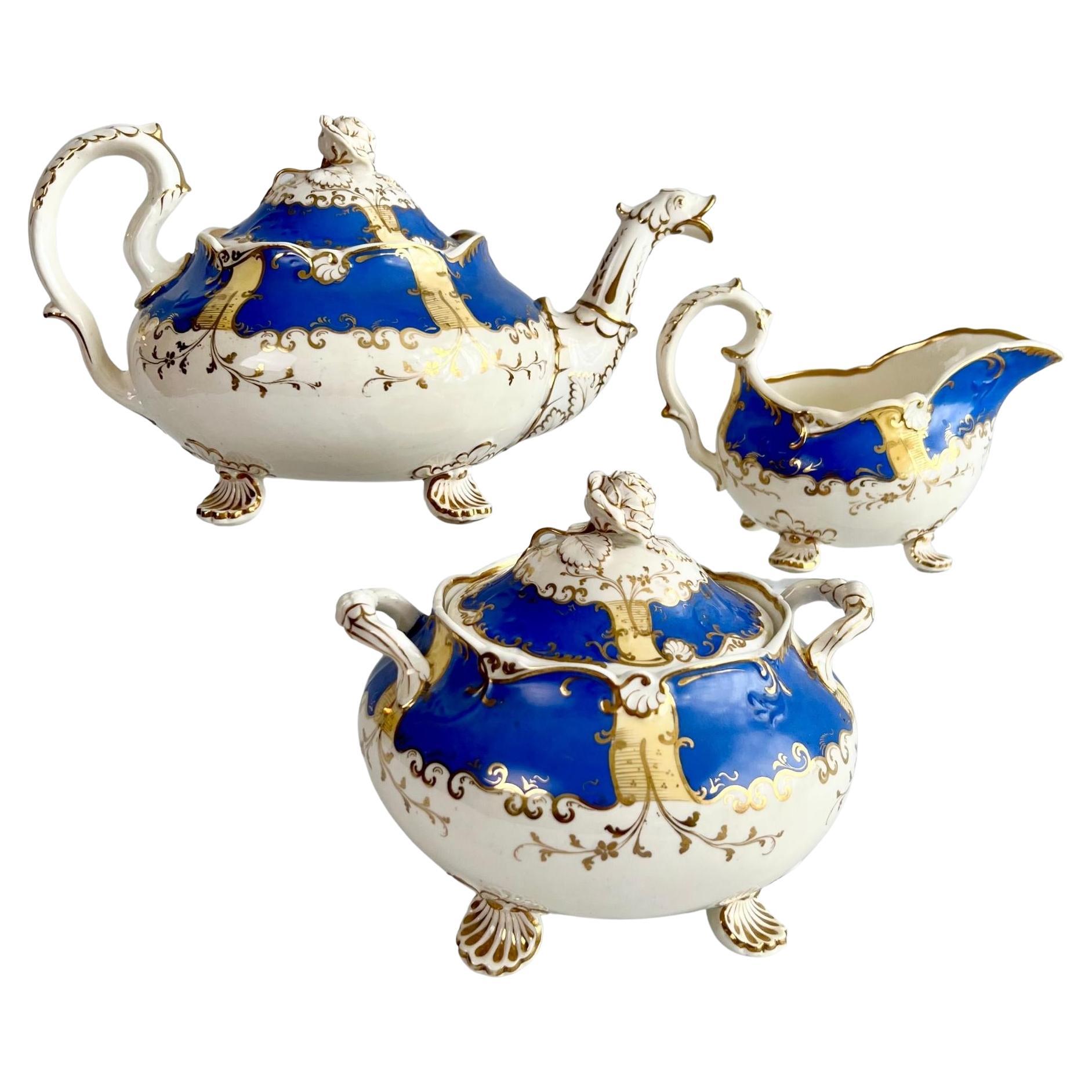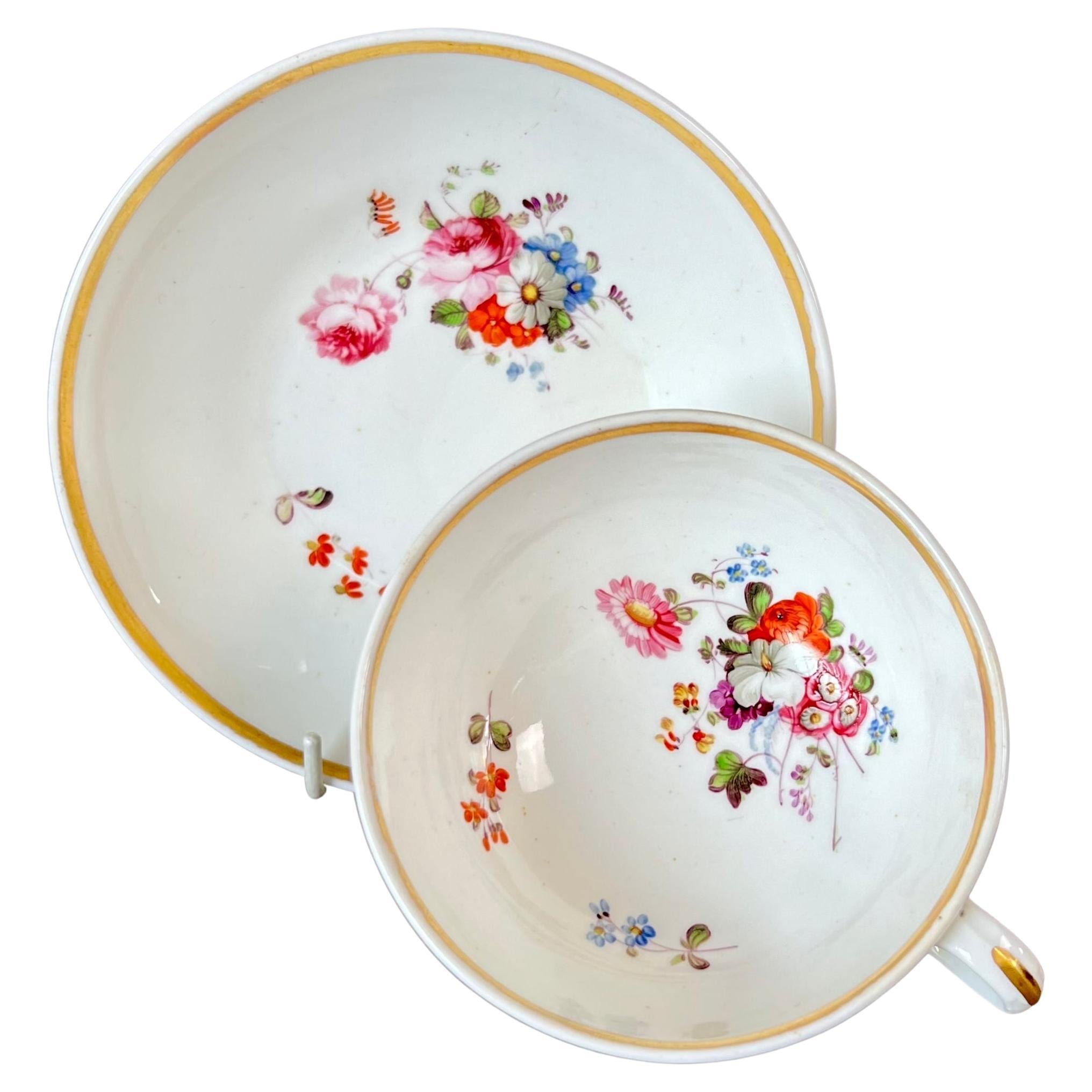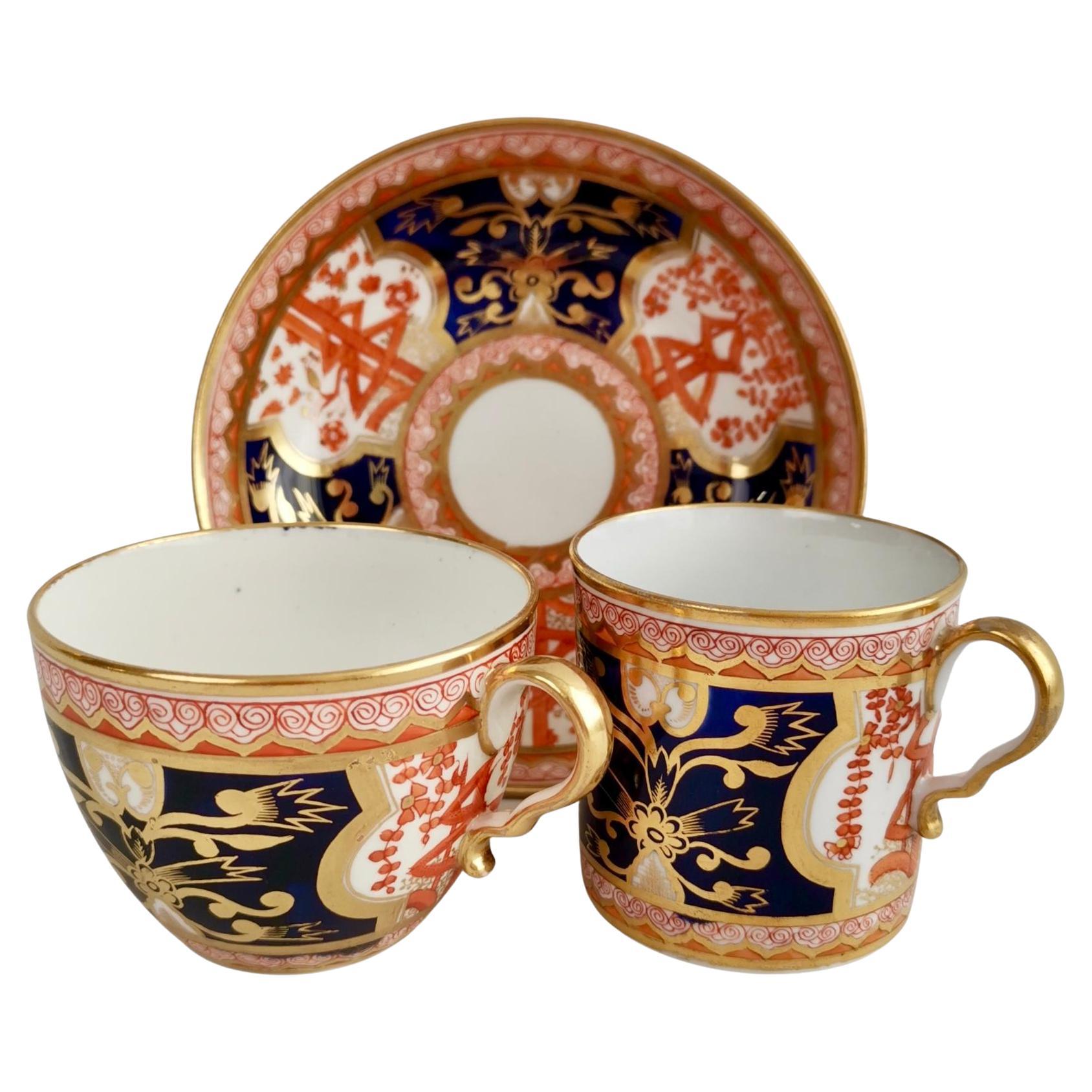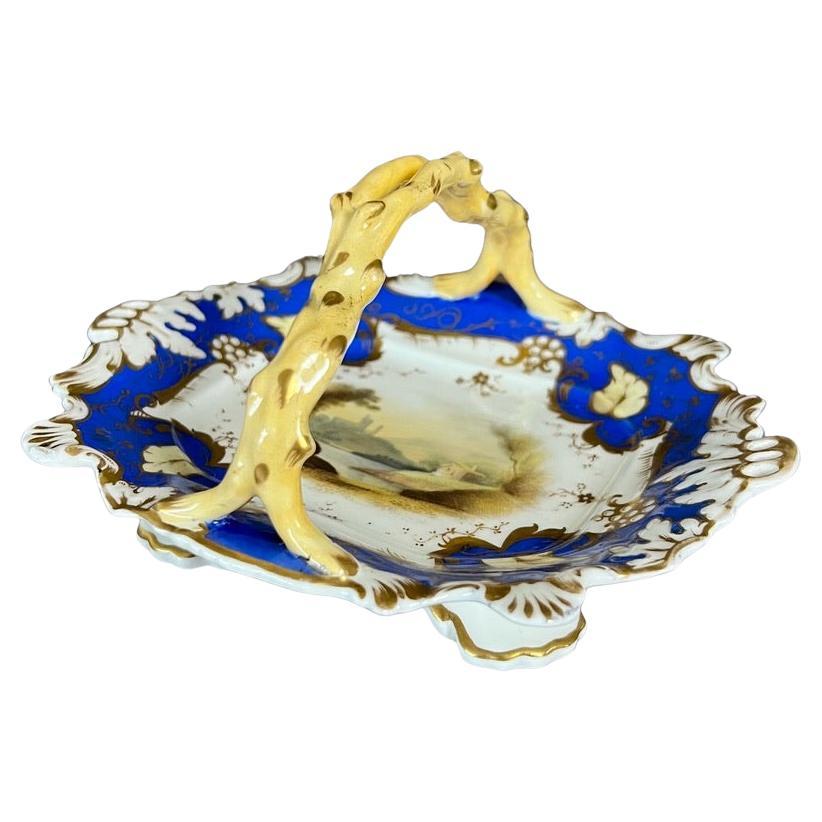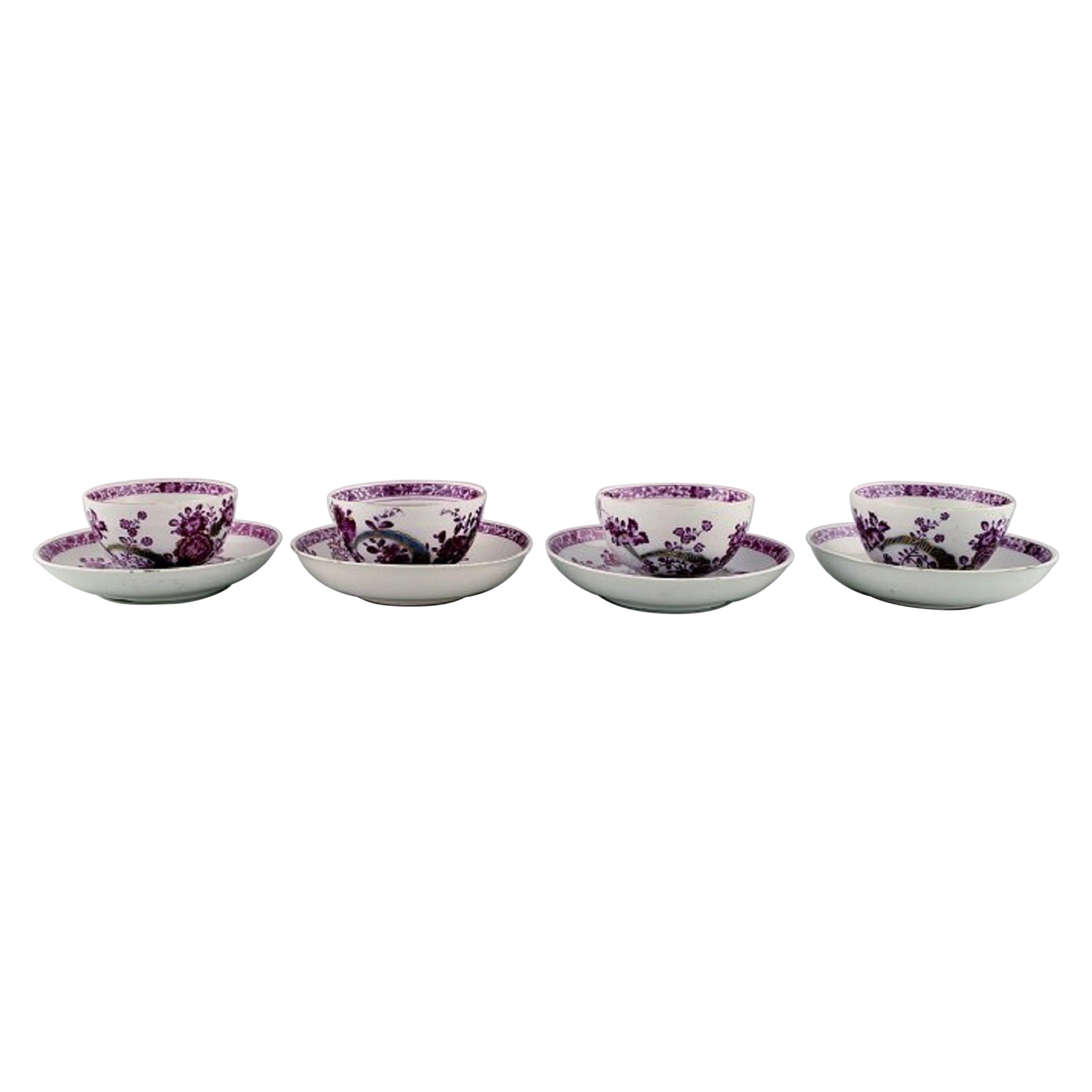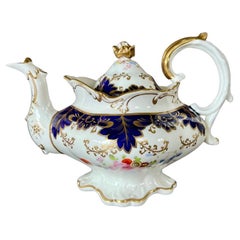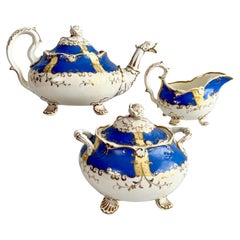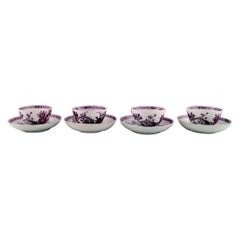
Coalport Porcelain Teacup, Beige with Landscapes, Rococo Revival, ca 1840
View Similar Items
Want more images or videos?
Request additional images or videos from the seller
1 of 16
Coalport Porcelain Teacup, Beige with Landscapes, Rococo Revival, ca 1840
About the Item
- Creator:Coalport Porcelain (Maker)
- Dimensions:Height: 1 in (2.54 cm)Width: 1 in (2.54 cm)Depth: 1 in (2.54 cm)
- Sold As:Set of 2
- Style:Rococo Revival (Of the Period)
- Materials and Techniques:
- Place of Origin:
- Period:
- Date of Manufacture:circa 1840
- Condition:Wear consistent with age and use. In very good condition without any damage or repairs; some crazing, a slight firing crack.
- Seller Location:London, GB
- Reference Number:Seller: A-COA32a-11stDibs: LU4805123869182
About the Seller
5.0
Vetted Seller
These experienced sellers undergo a comprehensive evaluation by our team of in-house experts.
Established in 2016
1stDibs seller since 2019
215 sales on 1stDibs
Authenticity Guarantee
In the unlikely event there’s an issue with an item’s authenticity, contact us within 1 year for a full refund. DetailsMoney-Back Guarantee
If your item is not as described, is damaged in transit, or does not arrive, contact us within 7 days for a full refund. Details24-Hour Cancellation
You have a 24-hour grace period in which to reconsider your purchase, with no questions asked.Vetted Professional Sellers
Our world-class sellers must adhere to strict standards for service and quality, maintaining the integrity of our listings.Price-Match Guarantee
If you find that a seller listed the same item for a lower price elsewhere, we’ll match it.Trusted Global Delivery
Our best-in-class carrier network provides specialized shipping options worldwide, including custom delivery.More From This Seller
View AllH&R Daniel Teacup Trio, Green with Flowers Patt. 4516, Rococo Revival ca 1827
By H&R Daniel
Located in London, GB
This is a rare and beautiful true trio made by H&R Daniel in about 1827. The set is potted in the "second gadroon" shape and bears pattern 4516 with a green ground and beautiful flow...
Category
Antique 1820s English Rococo Revival Tea Sets
Materials
Porcelain
$315 Sale Price / set
30% Off
Free Shipping
Samuel Alcock Teacup Trio, Beige with Hand Painted Flowers, Rococo Revival 1841
By Samuel Alcock & Co.
Located in London, GB
This is a beautiful "true trio" made by Samuel Alcock in or shortly after 1841. The trio is decorated in a warm beige ground with a gilt pattern and beautiful flowers in the centre of each item.
In the late 18th and early 19th Century cups and saucers...
Category
Antique 1840s English Rococo Revival Tea Sets
Materials
Porcelain
$304 Sale Price / set
34% Off
Free Shipping
Samuel Alcock Porcelain Teapot, Blue, Gilt and Flowers, Rococo Revival ca 1837
By Samuel Alcock & Co.
Located in London, GB
A teapot with cover in the “rustic bean” shape, cobalt blue ground with gilt acanthus motif and finely painted flower posies on the belly of the teapot
Pattern 5782
Year: ca 1837
Si...
Category
Antique 1830s English Rococo Revival Tea Sets
Materials
Porcelain
H & R Daniel Porcelain Teapot Set, Royal Blue and Gilt, Rococo Revival, 1831
By H&R Daniel
Located in London, GB
This is a beautiful teapot set made by H&R Daniel in about 1831. The set consists of a teapot with cover, a sucrier with cover and a milk jug.
The...
Category
Antique 1830s English Rococo Revival Porcelain
Materials
Porcelain
$1,172 Sale Price / set
30% Off
Free Shipping
Samuel Alcock Porcelain Teacup, White with Flower Sprays, ca 1823
By Samuel Alcock & Co.
Located in London, GB
A teacup and saucer in the “half orange” shape, white with simple gilt rim and beautiful hand painted flower sprays
Pattern unknown but similar to 1082
Year: ca 1823
Size: cup diameter 10cm (4”), saucer diameter 14.2cm (5.5”)
Condition: excellent, some rubbing to gilt
There are several items available in this design, please see group image and ask for more info if interested.
The Samuel Alcock factory was operative in Staffordshire between 1822 and 1856, after which it was bought by Sir James Duke and Nephews. The factory started as a partnership between the young Samuel Alcock and the older Ralph Stevenson, who provided the factory and capital. Alcock quickly took the factory to great heights, building one of the biggest factories of its time. Alcock jumped on the new Rococo Revival fashion and served a huge new middle class market. The reason we now don't hear much about Samuel Alcock porcelain...
Category
Antique 1820s English Regency Tea Sets
Materials
Porcelain
Samuel Alcock Teacup Trio, Yellow with Fine Romantic Landscapes, ca 1845
By Samuel Alcock & Co.
Located in London, GB
A true trio consisting of a teacup, a coffee cup and a saucer, “rustic bean” shape, in beautiful yellow pattern with acanthus leaves and very finely painted romantic landscapes with ...
Category
Antique 1840s English Victorian Tea Sets
Materials
Porcelain
You May Also Like
Four Antique Meissen Teacups with Saucers in Hand-Painted Porcelain
Located in Copenhagen, DK
Four antique Meissen teacups with saucers in hand-painted porcelain.
Purple flowers and gold decoration.
Museum quality, approx. 1740.
The cup meas...
Category
Antique 1740s German Porcelain
Materials
Porcelain
$2,560 Sale Price / set
20% Off
Bjørn Wiinblad for Rosenthal, Lotus Porcelain Service, 9 Teacups with Saucers
Located in Copenhagen, DK
Bjørn Wiinblad for Rosenthal. Lotus porcelain service.
9 teacups with saucers decorated with pink lotus leaves. 1980s.
The cup measures: 10 x 5 c...
Category
Vintage 1980s German Modern Porcelain
Materials
Porcelain
Set of Six Porcelain Bird Teacup Trios
By Flight, Barr & Barr Worcester
Located in New York, NY
Set of six porcelain bird teacup trios. Strikingly modern looking antique set of six BFB Worcester trios of six teacups and six coffee cups with six sh...
Category
Antique Late 18th Century English Empire Tea Sets
Materials
Porcelain
$4,000 / set
Six Royal Copenhagen Frijsenborg Teacups with Saucers in Hand-Painted Porcelain
Located in Copenhagen, DK
Six Royal Copenhagen Frijsenborg teacups with saucers in hand-painted porcelain with flowers and gold edge. 1950s.
The cup measures: 10 x 5 cm.
Sa...
Category
Vintage 1950s Danish Porcelain
Materials
Porcelain
Rörstrand, Sweden, a Set of Eleven Art Nouveau Porcelain Teacups with Saucers
Located in Copenhagen, DK
Rörstrand, Sweden.
A set of eleven Art Nouveau porcelain teacups with saucers.
hand painted with motifs of purple flowers.
Approx. 1910s.
In excellent condition.
First factory quality.
Marked in red...
Category
Vintage 1910s Swedish Art Nouveau Porcelain
Materials
Porcelain
Sèvres French Porcelain Hand Painted Teacup and Saucer with Bird Scenes, 1791
By Manufacture Nationale de Sèvres
Located in Bishop's Stortford, Hertfordshire
An exceptional and rare Sèvres Porcelain cabinet teacup and saucer each hand painted with birds within a landscape in coloured enamels and set...
Category
Antique 1790s French Louis XVI Porcelain
Materials
Porcelain
$4,561 / set
Free Shipping
Recently Viewed
View AllMore Ways To Browse
Set It Off
Princess Royal Fine Bone China
Red Italian Glass Tea Set With Gold Leaf
Republic Period Pewter And Brass Kettle
Sasaki Lightning
Satsuma Dragon Tea Set
Scotland Brass Kettle
Shelley Teapot
Spratling Jaguar
Tommy Parzinger Coffee Set
Tuscan China Tea Set
Upsala Ekeby Teapot
Vintage Japanese Kutani Tea Sets
Wedgwood Espresso Cups
Wedgwood Tri Color Jasper
William Spratling Jaguar
Winterling Roslau
Winterling Tea Set
